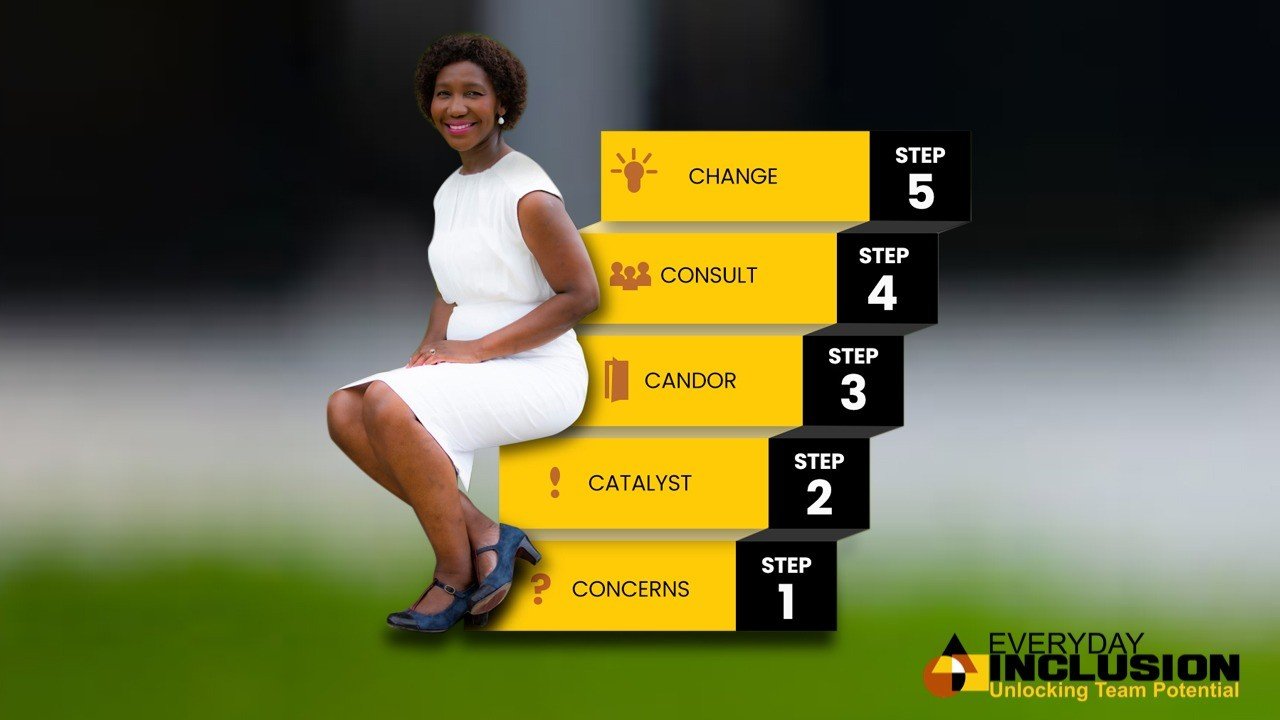Create Courageous Workplace Conversations
LinkedIn 05 July 2022
You know your team is the lifeblood of your business, yet you find it difficult to treat or invest in your greatest assets.
But, why?
The answer to this question is not rhetorical. It is also not so easily answered. But I will provide an approach (at the end of this article) to help you understand why business leaders still struggle to maintain a culture of Inclusion that support Everyone.
Whether you are conscious or unconscious in how to maintain practices that support everyone is immaterial. What’s important is that you can equip yourself with the right tools and knowledge so that you can combat exclusionary practices that continue to alienate some of your staff, from either performing their best, or losing your good staff altogether.
What Constitute Exclusionary Practice in the Workplace
Exclusionary practices are characterised by racism, sexism, ableism, ageism, gender, and others.
These practices, society is built on, so it forms the very fabric of our society. So, it's not about asking whether or if, your organisation has exclusionary practices, because the chances are, they are.
Therefore, it is the responsibility of every leader to come to speed with what these practices are and how to eliminate them from their systems: in Processes, Policies and Procedures.
Otherwise, these practices will go on unchecked and will continue to give negatives outcomes until it is identified, dealt with, and replaced with modern day thinking and ideologies.
Deal with the System issues not People
Yes.
This is precisely what we see, when organisation engage in unconscious bias training instead of dealing with systemic issues of racism, sexism, ableism, ageism, gender, and others.
This is because encouraging your staff to change their attitudes alone, to be kind, empathetic and un-biases won’t solve exclusionary practices at your work. They will exacerbate them.
Rather, monies would be well spent, when the systemic issues are brought to light and dealt with. You can’t change people’s behaviour alone and then have them return to a toxic culture, would you?
Leaders Need to Worry about Exclusionary Practices
Toxic Culture from Exclusionary practice will kill your business and its future standing and competitiveness in today’s market.
A recent study of more than 1.3 million Glassdoor reviews from U.S. employees of Culture 500 companies, a sample of large organizations from 40 industries concluded that Toxic culture would kill your business, of which exclusion is one of them.
The Toxic Culture Attributes are as follows:
Disrespectful
Non-inclusive
Unethical
Cutthroat
Abusive
Critical Conversations Transform Business
Gone are the days when societal issues like racism, sexism, ableism, ageism, gender and others stayed outside the bounds of the organisation. Employees are becoming more aware of social inequities and how they impact on their lives. Sometimes these inequities stop us to be our best self at work, we can miss out on promotion, or they simply negatively impact in our lives.
These everyday experiences whether outside and inside the organisations is impossible to simply compartmentalise or just leave outside the door of work. We know that they often follow us everywhere and can impact our lives in emotionally, physically, and mentally.
But also know, when leaders make room for critical and courageous conversation about racism, sexism, ableism, ageism, gender, and others and seek to address them systemically, real change happens.
Here is Five (5) Easy Step Approach
Therefore, I take companies through my Five (5) Easy Step Approach to you started on taking your team through journey from awareness of Concerns towards Change:
CONCERNS – become aware of the inequality in the world and potentially within in their workplaces. But is there any pressure to change your current way of working?
CATALYST - Then, there is a catalyst. Usually this is a high-profile event such as the killing of George Floyd that brings the racial disparity in our culture to the forefront of the public consciousness.
CANDOR - Looking at the racial disparities in an organisation can be intensely uncomfortable. And here organisations have a choice: either move forward or not act.
CONSULT - When an organisation decides to act, they bring in an expert. A consultant who can support your business through the process of assessing and improving the racial relations inside the organisation.
CHANGE - Finally, an organisation can make the changes to become a safer work environment that supports people of all races.
Have a look at this process and tell me where you are?

